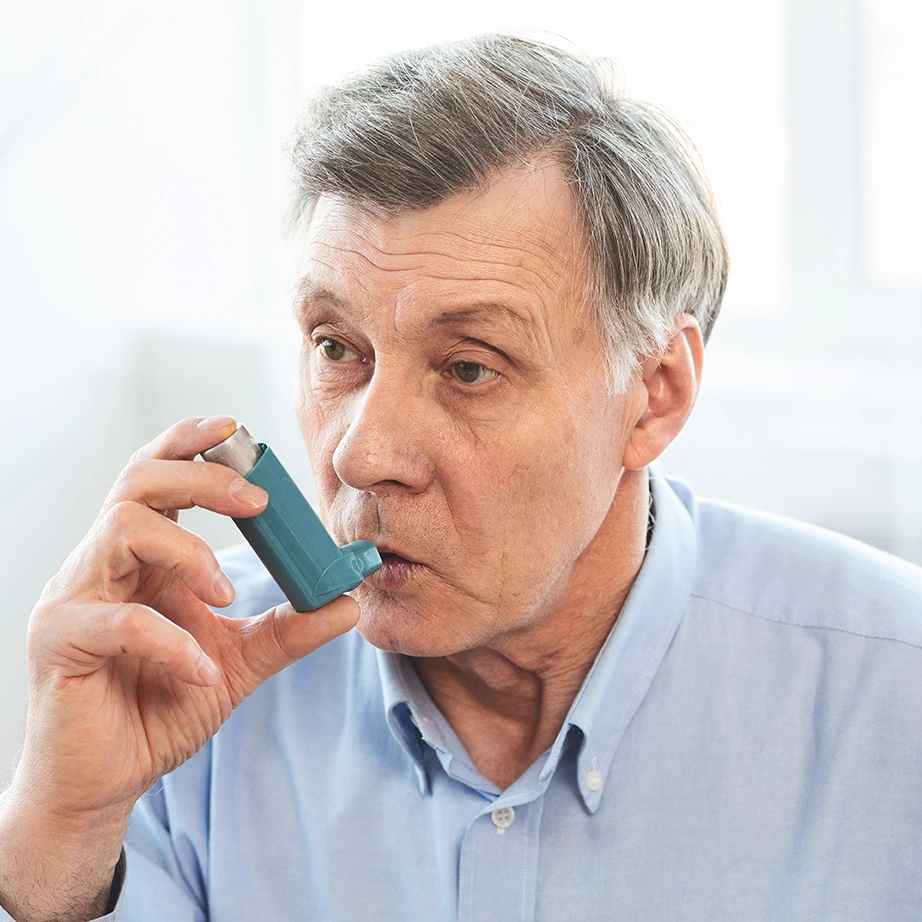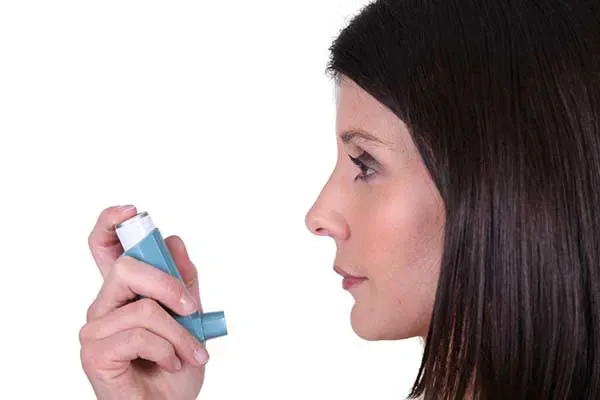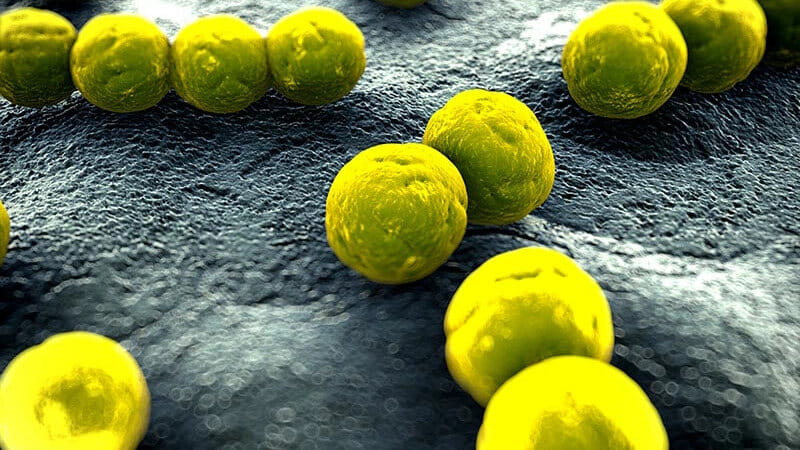Molnupiravir - FAQ Booklet
Q: What is Molnupiravir and what it is used for?
Ans: Molnupiravir is originally developed to treat influenza. It has broad spectrum antiviral activity against influenza virus and coronaviruses, such as MERS-CoV, and SARS-CoV.
Molnupiravir is used for the treatment of adult patients with COVID-19, with SpO2 >93% and who have high risk of progression of the disease including hospitalization or death.
Limitations of authorized use
Molnupiravir is not authorized:
- for use in patients less than 18 years of age
- for initiation of treatment in patients requiring immediate hospitalization due to COVID-19 at that stage, (however, if it was initiated before hospitalization due to COVID 19, it may be continued).
- for use for longer than 5 consecutive days.
- for pre-exposure or post-exposure prophylaxis for prevention of COVID-19
- for pregnant women
- Females of childbearing potential should use a reliable method of contraception correctly and consistently, as applicable, for the duration of treatment and for 4 days after the last dose of molnupiravir.
- Males of reproductive potential who are sexually active with females of child bearing potential should use a reliable method of contraception correctly and consistently during treatment and for at least 3 months after the last dose.
Q: What are the various clinical benefits observed with Molnupiravir?
Ans: Few clinical benefits of Molnupiravir showed in clinical trials are:
- Relative risk reduction of hospitalization or death by 30% in Molnupiravir group compared with placebo.
- Greater improvement in WHO Clinical Progression Scale with molnupiravir over placebo.
- Consistent efficacy among subgroups including participants infected with SARS-CoV-2 variants (delta, gamma, and mu).
Q: What is the dosage of Molnupiravir?
Ans: The recommended dosage is 800 mg twice a day orally for 5 days (10 doses total).
Q: What is mode of action of Molnupiravir?
Ans: Molnupiravir is a prodrug which after entering the body gets metabolized to N4-hydroxycytidine (NHC), which distributes into cells where NHC is phosphorylated to form the pharmacologically active ribonucleoside triphosphate (NHC-TP). NHC-TP gets incorporated into viral ribonucleic acid (RNA) by the viral RNA-dependent RNA polymerase (RdRp, nsp12), results in an accumulation of copy errors in the viral genome leading to inhibition of replication.
Q: What are the contraindications for Molnupiravir?
Ans: There are few contraindications in which the Molnupiravir should not be taken. These are
- Patients with a history of hypersensitivity to the components of this drug
- A pregnant or lactating woman, or a woman who may be pregnant
- Patients with severe hepatic impairment
- Patients with severe renal impairment
Q: Does food effect absorption of the drug?
Ans: No, food does not impact absorption of the drug. As during clinical study in healthy subjects, it has been observed that the administration of a single 200 mg dose of molnupiravir with a high-fat meal resulted in a 35% reduction in NHC peak concentrations (Cmax), however no significant affect observed with area under the curve (AUC).
Q: What is a prodrug?
Ans: A prodrug is a medication or compound that, after administration, is metabolized (i.e., converted within the body) into a pharmacologically active drug.
Q: Which are the patients who are currently not eligible for Molnupiravir?
Ans: Currently, Molnupiravir is not recommended in special populations such as pregnant, lactating women and children.
Q: Is any dose adjustment needed in renal and hepatic impairment patients?
Ans: No dose adjustment is required for patients with renal and hepatic impairment patients.
Q: Can a person drive and use machines after taking Molnupiravir?
Ans: Currently no such data is available. No studies on the effects on the ability to drive and use machines have been performed.
Q: What are the known side effects of Molnupiravir?
Ans: Like all medicines, Molnupiravir can also cause side effects, although not everybody gets them. Some common side effects are diarrhoea, nausea, feeling dizzy and headache. Vomiting, rash and hives are not so common side effects observed with Molnupiravir.
Q: How Molnupiravir is better than favipiravir?
Ans: Both Molnupiravir and favipiravir are oral antiviral drugs. However, there are few advantages of Molnupiravir over favipiravir such as:
- Shorter duration of therapy: for Molnupiravir dosage is 800mg BID for 5 days while for favipiravir dosage is 1600mg BID on day 1 followed by 800mg BID for 7-10 days.
- Reduction in the rate of hospitalization: Molnupiravir has shown to reduce rate of hospitalization/death in Covid-19 patients. However, no such data is available for favipiravir.
- Better safety profile: Molnupiravir is found to be safe in phase 1,2 and 3 clinical trial. However, Increase in Uric Acid levels, GI disturbance, Liver function enzymes raised are few adverse effects observed with favipiravir.
Q: How we can compare remdesivir and molnupiravir?
Ans: Both Molnupiravir and remdesivir are antiviral drugs. However, the comparison is given in the table below.
|
Molnupiravir |
Remdesivir | |
|
Anti-viral activity |
Broad-spectrum action. |
Broad-spectrum action. |
|
Dosage |
800 mg BID orally for 5 days |
200 mg (loading dose) on day 1 and 100 mg (maintenance dose) up to 10 days. |
|
Indications |
For the treatment of adult patients with COVID-19, with SpO2 >93% and who have high risk of progression of the disease including hospitalization or death |
For the treatment of moderate to severe Covid-19 in patients (Hospitalized) |
|
Route |
Oral |
Intravenous |
|
Mechanism |
Causes copy errors in the viral genome leading to inhibition of viral replication. |
competes with the natural ATP substrate for incorporation into nascent RNA chains results in delayed chain termination during replication of the viral RNA. |
|
Side effects |
Headache, diarrhoea, and rash. |
Nausea, hyperglycaemia, headache, respiratory failure, anaemia, and hypokalaemia. |
Q: How we can compare Monoclonal antibody cocktail (Casirivimab and Imdevimab) and molnupiravir?
Ans: The two drugs are compared in the table below.
|
Molnupiravir |
Monoclonal antibody cocktail (Casirivimab and Imdevimab) | |
|
Route |
Oral |
Intravenous/subcutaneous |
|
Dosage |
800 mg BID orally for 5 days |
Casirivimab and Imdevimab is approved at a combined dose of 1200 mg (600 mg of each drug) administered by intravenous infusion or subcutaneous route. |
|
Indications |
For the treatment of adult patients with COVID-19, with SpO2 >93% and who have high risk of progression of the disease including hospitalization or death |
For the treatment of mild to moderate adults and pediatric patients (12 years of age or older, weighing at least 40 kg) who are confirmed to be infected with SARS-COV2 and who are at high risk of developing severe COVID-19 disease and do not require oxygen. PEP : Casirivimab in combination with Imdevimab is indicated in adult individuals ( ≥ 18 years) for post-exposure prophylaxis of COVID-19 in individuals who are at high risk for progression to severe COVID-19, including hospitalization or death, and are : not fully vaccinated (As per approved schedule) or who are not expected to mount an adequate immune response to complete SARS-CoV-2 vaccination (for example, individuals with immunocompromising conditions including those taking immunosuppressive medications) and have been exposed to an individual infected with SARS-CoV-2 i.e. having direct physical contact with the person, sharing eating or drinking utensils, or being exposed to respiratory droplets from an infected person. who are at high risk of exposure to an individual infected with SARSCoV-2 because of occurrence of SARS-CoV-2 infection in other individuals in the same institutional setting (for example, nursing homes, prisons) |
|
Mechanism |
Causes copy errors in the viral genome leading to inhibition of viral replication. |
Casirivimab (IgG1?) and imdevimab (IgG1?) are two recombinant human mAbs. Bind to non-overlapping epitopes of the spike protein receptor binding domain (RBD) of SARS-CoV-2, casirivimab and imdevimab together blocked RBD binding to the human ACE2 receptor prevents viral attachment to host cells. |
|
Side effects |
Headache, diarrhoea, and rash. |
Infusion related reaction |
Q: Can Molnupiravir be given in post exposure prophylaxis (PEP)?
Ans: No. currently it is not approved for post exposure prophylaxis. However, a Phase 3, Multicenter, Randomized, Double-blind, Placebo-controlled Study is ongoing.
Q: Is Molnupiravir effective against different circulating SARS-CoV-2 variants?
Ans: In the phase 3 trial, Molnupiravir was found to be effective against three most common SARS-CoV-2 variants, B.1.617.2 (delta), B.1.621 (mu), P.1 (gamma). The recently identified Omicron variant has more than 30 mutations in Spike, but only one in the proteins targeted by molnupiravir, hence it is likely to retain its activity against Omicron variant.
Recently conducted invitro studies have shown that Molnupiravir retain its activity against Omicron variant.
Q: Can this be given along with other antiviral therapy/monoclonal antibody?
Ans: Currently no such data is available.
Q: Are there any drug interactions with Molnupiravir?
Ans: No drug interactions have been identified based on the limited available data. No clinical interaction studies have been performed with molnupiravir. Based on in vitro studies, neither molnupiravir nor NHC are inhibitors or inducers of major drug metabolising enzymes or inhibitors of major drug transporters. Therefore, the potential for molnupiravir or NHC to interact with concomitant medications is considered unlikely.
Q: Is Molnupiravir only approved & available in India?
Ans: Till 29 December 2021, Molnupiravir is being licensed (EUA) for use in the United Kingdom, United States, Japan, Denmark and Philippines and India for SARS CoV-2 infected persons 18 years of age or older who have one risk factor for progression to severe illness.










